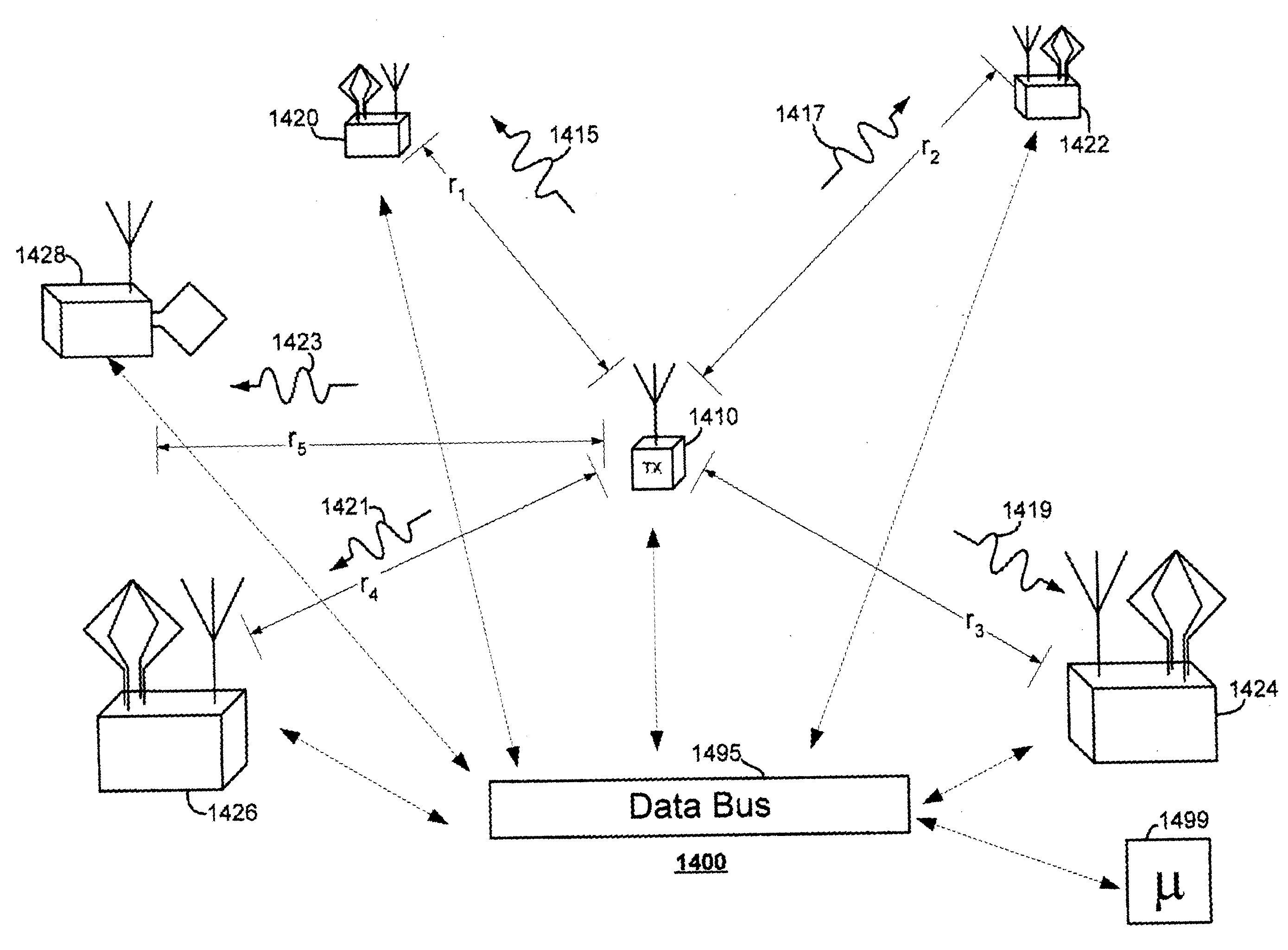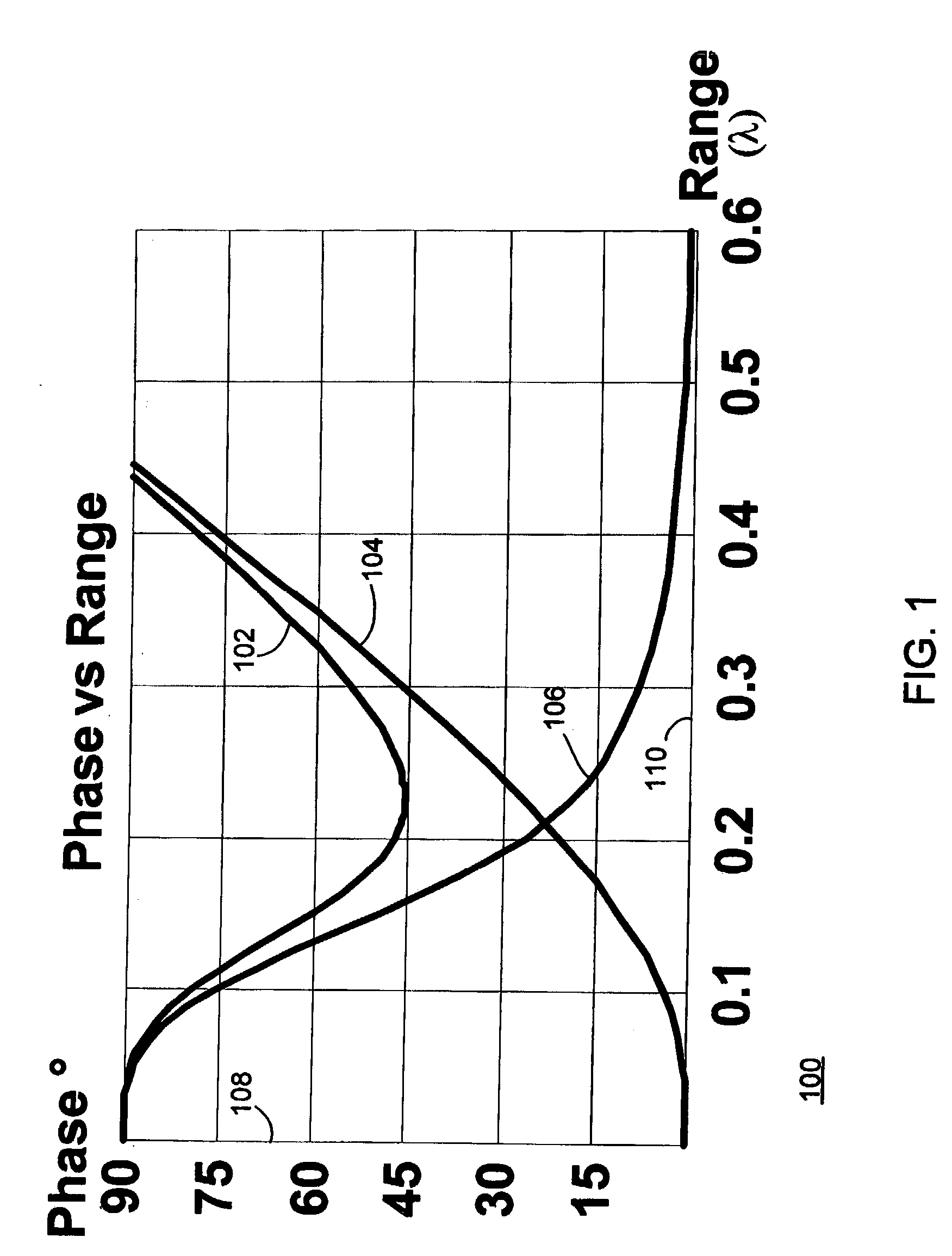System and method for near-field electromagnetic ranging
a near-field electromagnetic and system technology, applied in the field of near-field electromagnetic ranging, can solve the problems of increasing the difficulty of radar detection, the inability to rotate the antenna at a high enough angular velocity, and the measurement of at least two different locations
- Summary
- Abstract
- Description
- Claims
- Application Information
AI Technical Summary
Benefits of technology
Problems solved by technology
Method used
Image
Examples
Embodiment Construction
[0123] FIG. 6 is a schematic diagram of details of a preferred embodiment of a system for near-field ranging by comparison of electric and magnetic field phase. In FIG. 6, a ranging system 600 includes a beacon 610 and a locator 620 separated from beacon 610 by a range r. Beacon 610 includes a transmitter 612 which may be mobile or fixed, and a transmit antenna 636. Transmitter 612 may include means to change properties of a transmitted electromagnetic signal 615 including, by way of illustration and not by way of limitation, changing frequency, phase, polarization, or amplitude of an electromagnetic signal 615 according to a predetermined pattern, in response to an input or stimulus, such as, for example, a control signal received from a data bus 695. In alternate embodiments, transmitter 612 may modulate a transmitted electromagnetic signal 615 so as to convey information. Such information may include information that identifies beacon 610 or other information or telemetry of valu...
PUM
 Login to View More
Login to View More Abstract
Description
Claims
Application Information
 Login to View More
Login to View More - R&D
- Intellectual Property
- Life Sciences
- Materials
- Tech Scout
- Unparalleled Data Quality
- Higher Quality Content
- 60% Fewer Hallucinations
Browse by: Latest US Patents, China's latest patents, Technical Efficacy Thesaurus, Application Domain, Technology Topic, Popular Technical Reports.
© 2025 PatSnap. All rights reserved.Legal|Privacy policy|Modern Slavery Act Transparency Statement|Sitemap|About US| Contact US: help@patsnap.com



